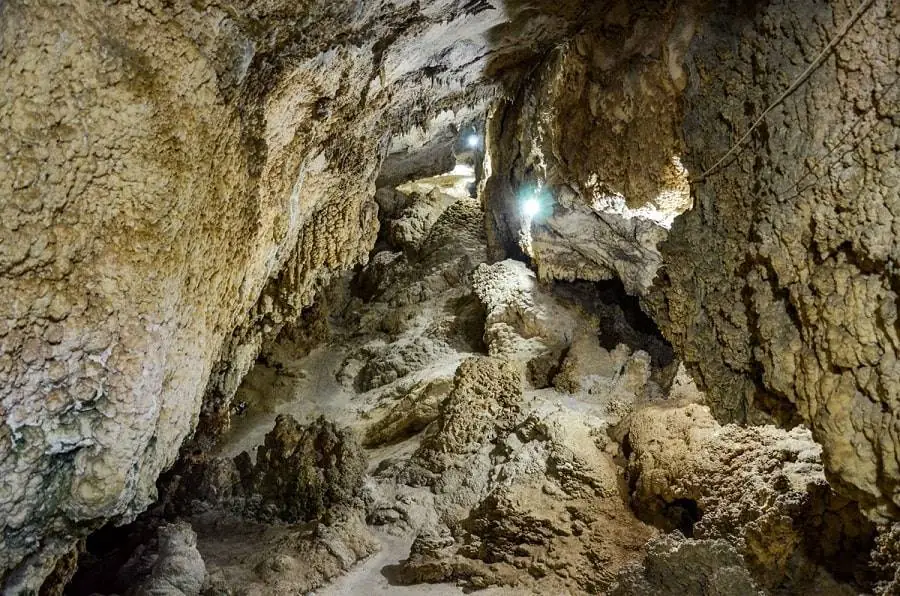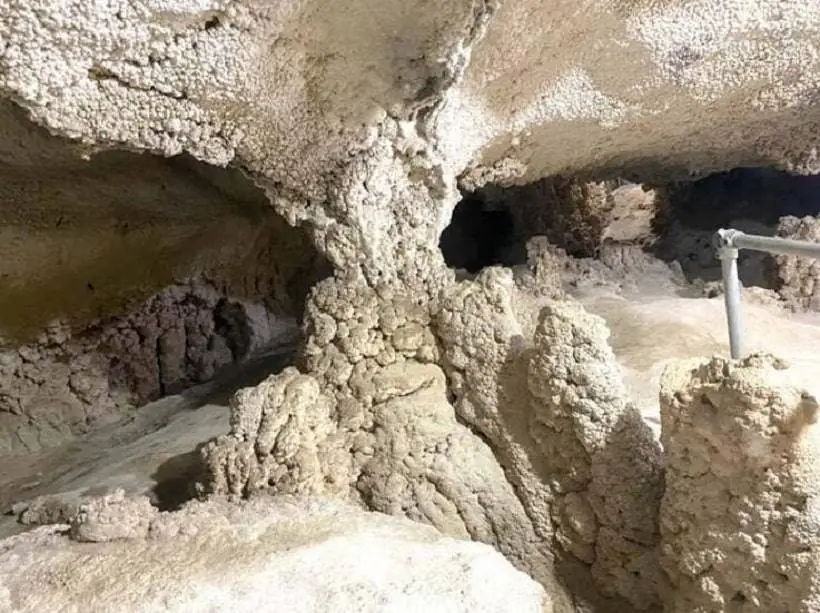The only gypsum cave in the world that is available for tourism is the Incirli Cave, which is situated on Ipsaro Hill in the Turkish Republic of Northern Cyprus (TRNC). The only gypsum cave in the world that is open to tourism is ncirli Cave, which is situated on Ipsaro Hill, two kilometres southeast of the village of narck at the base of the Beşparmak Mountains in the TRNC.

The cave, which is one of the around 370 caves in Cyprus and is normally made of gypsum, is 311 metres long, varies in width from 1 to 7 metres, and has a ceiling height that is claimed to change depending on the phases of the moon. The cave’s highest point rises 14 metres above the ground. The cave’s deepest point is located here as well. After the 20-meter segment, there are a series of extremely short, winding tunnels at the entry that extend in different directions.
The path abruptly narrows and twists towards the end of the accessible region, creating a labyrinth-like journey with little passages divided into dark recesses and rock formations swept upward with exquisite curves. The second and last section of the cave is reached after travelling around 60 metres. Beyond this point, which is blocked off with blocks that have fallen from the roof, is perilous and not permitted. The Ncirli Cave’s interior, which is barely 70 metres long, fortified, illuminated, and accessible to the public, is cool due to natural air conditioning. It seems warm in winter and chilly in summer because the temperature stays at 18 to 19 degrees throughout the year.
♦ 2 Days Ephesus Pamukkale Tour From Istanbul

Outside of the steps at the entrance lies the entirely natural geographical structure known as Incirli Cave, which exhibits the distinctive qualities of the quaternary relief system. The cave has a structure with hooks and cages because of the lithological characteristics of gypsum stones and the way their extensive cracks cross each other. The latter sections, in particular, are made up of labyrinth-like halls and tunnels that are connected to one another. Gypsum is used to create the 2 metre high stalactites and stalagmites in the southeast gallery of the ncirli Cave.
Rough stalagmites grow from the floor, and coarse stalactites dangle from the ceiling. The only advanced gypsum topography cave known in Northern Cyprus is enhanced by the unusual cauliflower-like formations made of white mineral on the side walls and the columns stretching to the ceiling, sandstone rock formations, and prismatic crystal-looking mineral veined walls.

